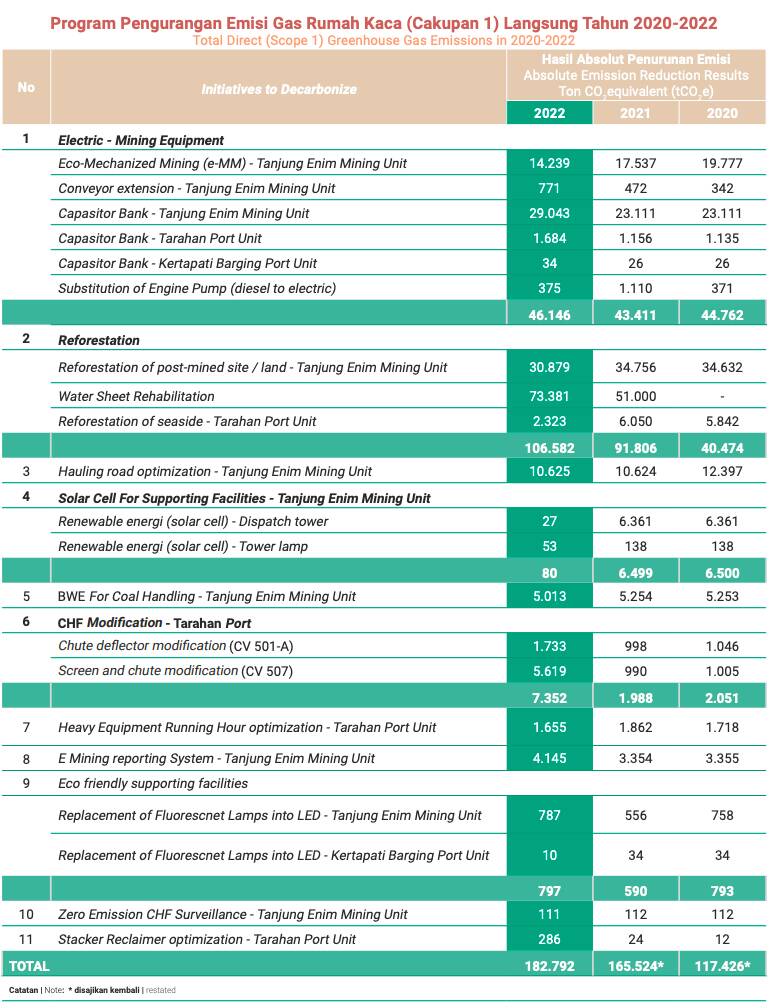Air Pollution Emissions
Greenhouse gas emission is a severe problem to the world’s citizens because it is the leading cause of global warming. Greenhouse gas emissions, namely the release of greenhouse gases into the atmosphere, are contributed by various human activities. Among other things, due to the increasingly massive use or consumption of fossil fuels. Because the threat of global warming is becoming more and more real, including the negative impacts that occur on the earth, the Indonesian government is committed to taking a role in reducing greenhouse gas emissions.
This commitment was strengthened by the issuance of Presidential Regulation no. 61 of 2011 concerning the National Action Plan for Reducing Greenhouse Gas Emissions (RAN-GRK), a working document containing efforts to reduce greenhouse gas emissions in Indonesia. This Presidential Regulation has been followed by the issuance of Presidential Regulation No. 71 of 2011 concerning the Implementation of the National Greenhouse Gas (GHG) Inventory. [GRI 103-1]
As one of the state-owned enterprises, PTBA is also responsible and committed to supporting government measures and policies in reducing the negative impact of greenhouse gas emissions. The actual steps taken by the Company include issuing Bukit Asam Management System Guidelines, which include, among others, regulating the quality and environmental management. [GRI 103-2]
The steps taken by PTBA to reduce greenhouse gas emissions are as follows: [103-3, 305-5] [OJK F.12]
During the reporting year, PTBA has measured greenhouse gas emissions in the form of CO2 produced, both direct (scope 1) and indirect (scope 2) greenhouse gas emissions. The primary source of greenhouse gas emissions for scope 1 is the consumption of fossil fuels. In contrast, emissions for scope 2 are sourced from electricity generation purchased or obtained from PLN or produced by PTBA’s power plant. The calculation is based on the following formula: [GRI 103-3, 305-1, 305-2]
Furthermore, based on the results of the emission calculation, PTBA has calculated the intensity of greenhouse gas emissions with the following results:
[GRI 103-3, 305-4] [OJK F.11]

For other indirect (scope 3) greenhouse gas emissions, such as emissions from the use of fuel by suppliers/partners, PTBA cannot submit it in this report. This is because, in cooperation with suppliers/partners, there is no clause regarding the submission of data on the volume of fuel they use. Thus, the Company cannot calculate emissions from the use of such fuel. However, PTBA can use the upstream and downstream activity categories of the ‘GHG Protocol Corporate Value Chain Accounting and Reporting Standards’. One of the sources of upstream emission which is included in the other indirect [Scope 3] GHG emission category is official travel, which in this report is sourced from official travel by airplane mode. In this report, the scope of business travel data by plane refers to the trips of the Board of Commissioners and the Board of Directors. [GRI 103-3, 305-3] [OJK F.11]
Penghitungan emisi GRK [Cakupan 3] tidak langsung lainnya dilakukan dengan menggunakan kalkulator karbon ICAO (International Civil Aviation Organization/Asosiasi Penerbangan Sipil Internasional). Penghitungan berdasarkan kelas kabin dan jarak antara bandara keberangkatan dengan bandara kedatangan. Berdasarkan perhitungan tersebut, emisi GRK [Cakupan 3] tidak langsung lainnya tahun 2021 tercatat sebesar 24.621 kgCO2eq, naik dibandingkan tahun 2020, yang mencapai 12.626 kgCO2eq. [103-3, 305-3]

Emissions of Ozone Depleting Substances (ODS)
The use of ozone-depleting goods or substances can harm the environment and significantly impact the climate change. Ozone Depleting Substances (ODS) are chemical compounds that can react with ozone molecules in the stratosphere. ODS is commonly used for air conditioning machines (AC).
The use of ODS will cause depletion of the ozone layer, which results in environmental degradation, limited sources of clean water, damage to the marine food chain, decreased agricultural production, and so on. PTBA is aware of various environmental risks in ODS use, so the Company is committed to fully supporting the government’s policies to tighten, even prohibit, the use of ODS. [GRI 103-2]
Bukit Asam has carried out mapping to determine whether or not there is the use of ODS in mining operations and offices. The mapping results show the use of these ODS, namely office & residential AC refrigerants and a light fire extinguisher (APAR) exist. Furthermore, following the initial commitment to reduce greenhouse gas emissions, including ODS emissions, Bukit Asam has a policy to reduce ODS emissions, as follows:[GRI 103-3, 305-6] [OJK F.12]
- Using refrigerants for air conditioners that are environmentally friendly. The absolute result of reducing emissions in 2022 from replacing BPO-CFCs in office & residential AC refrigerants is 15.955 tCO2e.
Meanwhile, in the production process there was ) ODS emissions (in metric tons equivalent to FCF-11).
Air Emissions of Nitrogen Oxides (NOx), Sulfur Oxides (SOx), and Other Significant Air Emissions
Following the business sector in mining sector, Bukit Asam complies with all environmental regulations, including the Regulation of Minister of Environment of the Republic of Indonesia No. 4 of 2014 concerning Quality Standards for Emissions from Immovable Sources for Mining Business and/ or Activities. In this regulation, coal mining activities are among six types of mining activities along with nickel ore, bauxite, tin, iron, and other mineral ores. To comply with this regulation, the Company is committed to reducing air pollution, Such as the entry or inclusion of substances, energy, and/or other components into the ambient air by human activities, thereby exceeding the emission’s quality standards that have been set.
Per the above ministerial regulation, Bukit Asam has measured the emission of nitrogen oxides (NOx), sulfur oxides (SOx), and other air emissions such as particulate with the following results:[GRI 103-3, 305-7] [OJK F.11 [12.4.2]






